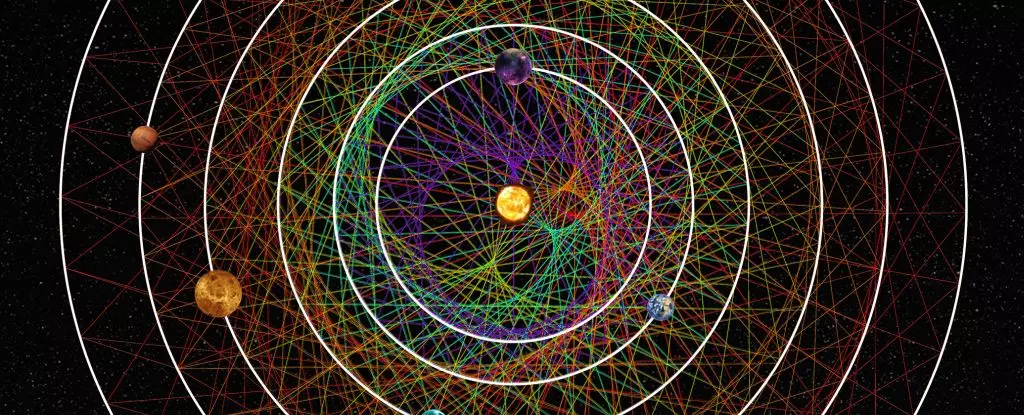Located 100 light-years away from our Solar System lies a planetary system that has intrigued scientists with its perfect mathematical harmony. The star at the center of this system, an orange dwarf known as HD 110067, is accompanied by six exoplanets that orbit in precise resonance with each other. This rare alignment has kept the system stable and undisturbed for approximately a billion years since its formation. This remarkable stability presents an ideal environment for studying the potential emergence and evolution of life.
Astrophysicist Carmen Choza and her team at the SETI Institute have conducted an extensive search for technosignatures in the HD 110067 system. Technosignatures are radio signals that could indicate the presence of past or present extraterrestrial technology. Despite thorough scanning of the system, the researchers found no evidence of such signals in the data obtained. However, the stability and characteristics of the HD 110067 system make it a promising target for future observations with more sensitive equipment.
Detecting alien technology in the vast expanse of the Milky Way poses significant challenges for scientists. The sheer size of the galaxy, coupled with limited knowledge of what specific signals to look for, complicates the search. Drawing from Earth’s radio emissions as a reference point, researchers at SETI extrapolate potential wavelengths and signal patterns of alien technology to guide their investigations. This approach allows them to explore nearby star systems for any signals that may resemble those produced by advanced civilizations.
The unique characteristics of the HD 110067 system make it an intriguing candidate for potentially hosting life. All six exoplanets in the system are smaller than Neptune, with some having the possibility of containing liquid water on their surfaces. The presence of liquid water is a key criterion in the search for habitable environments beyond Earth. Choza and her colleagues are optimistic about the system’s potential for supporting life, despite the absence of detectable technosignatures in their initial search.
While the search for alien technology in the HD 110067 system did not yield conclusive results, Choza and her team remain committed to continuing their investigations. By employing increasingly sensitive and diverse search methods in the future, they aim to revisit not only HD 110067 but also other systems with similar potential for hosting extraterrestrial life. The quest to unravel the mysteries of the cosmos and uncover evidence of life beyond Earth drives the scientific curiosity and determination of researchers at the forefront of space exploration.
The HD 110067 system symbolizes a beacon of hope in the vastness of space, offering tantalizing possibilities for the existence of life beyond our planet. Despite the challenges and uncertainties that accompany the search for extraterrestrial intelligence, scientists persevere in their quest to unlock the secrets of the universe and unravel the mysteries of distant worlds. Through continued exploration and technological advancements, humanity stands poised on the brink of discovering what lies beyond the confines of our own celestial home.



Leave a Reply